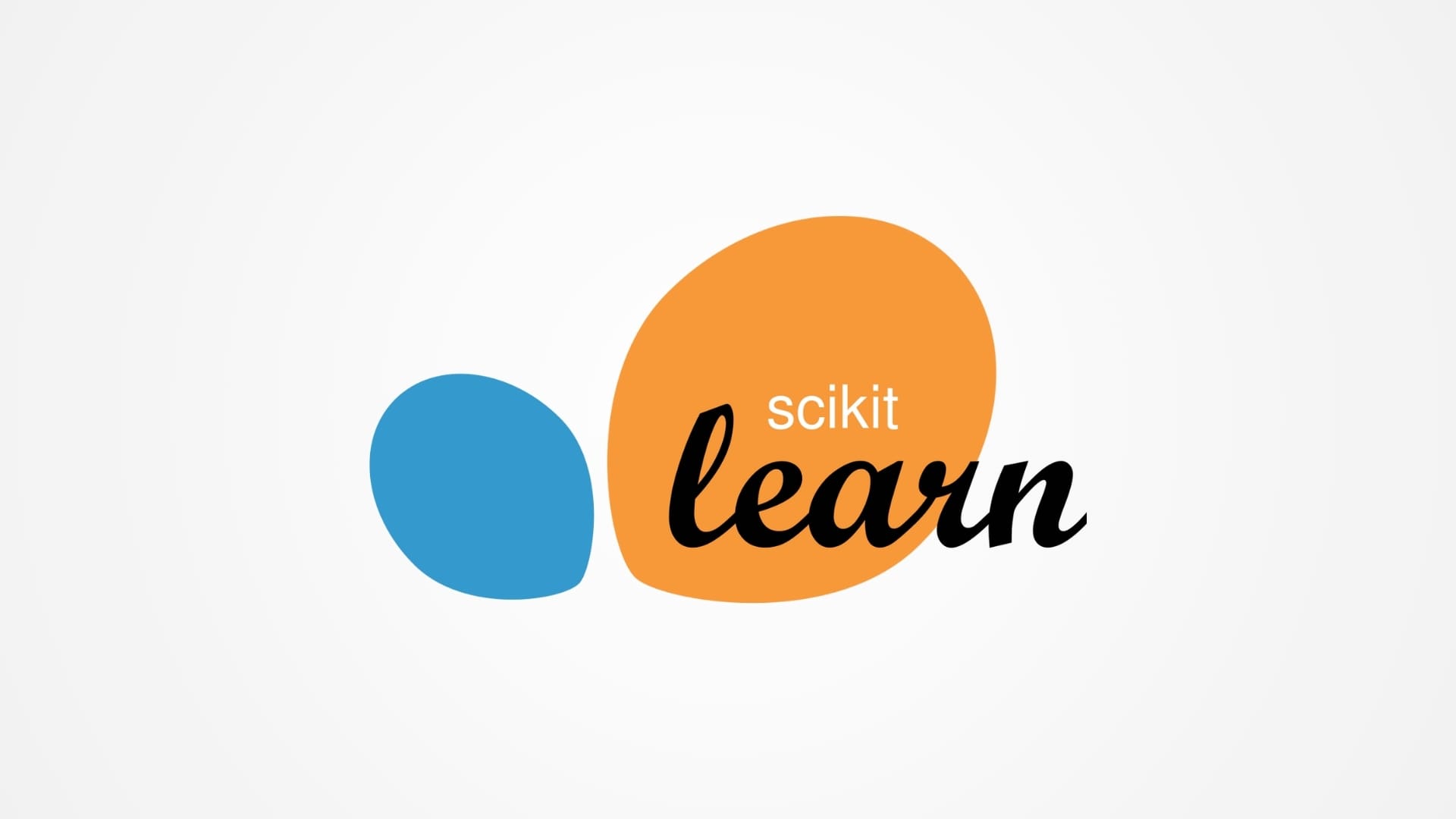Feature selection is a critical step in the data preprocessing pipeline that significantly impacts the performance of machine learning models. By selecting the most relevant variables for analysis, feature selection helps reduce model complexity, improve accuracy, and enhance interpretability. With the explosion of data in recent years, datasets often contain a vast number of features, many of which may be redundant, irrelevant, or noisy. Including such features in the analysis can lead to overfitting, increased computational cost, and reduced model performance.
Feature selection techniques aim to identify and retain the most informative features while discarding those that do not contribute meaningfully to the predictive power of a model. These techniques are particularly valuable in high-dimensional datasets, such as those used in genomics, image processing, and text mining, where the number of features can far exceed the number of observations.
This guide provides an in-depth exploration of various feature selection techniques, from simple filter methods to more sophisticated embedded approaches. We will discuss the importance of feature selection, how it can be implemented, and the advantages of using different methods in real-world scenarios.
Why Feature Selection Matters
Feature selection is essential for several reasons, each of which contributes to the overall effectiveness of a machine learning model:
- Improving Model Performance: By eliminating irrelevant and redundant features, feature selection enhances model performance, leading to faster training times, reduced overfitting, and improved generalization to new data.
- Reducing Complexity: Simplifying the model by focusing only on the most important features makes it easier to interpret and understand. This is particularly important in fields like healthcare and finance, where model transparency is crucial.
- Reducing Computational Cost: Fewer features mean less computational overhead, making it feasible to train models on larger datasets or deploy them in resource-constrained environments.
- Enhancing Data Understanding: Feature selection helps identify the key drivers of outcomes, providing valuable insights into the underlying data structure and the factors that influence predictions.
- Mitigating the Curse of Dimensionality: In high-dimensional datasets, the curse of dimensionality can lead to sparse data and degraded model performance. Feature selection reduces the dimensionality, making the data more manageable and improving the robustness of the model.
Types of Feature Selection Techniques
Feature selection techniques can be broadly categorized into three main types: Filter Methods, Wrapper Methods, and Embedded Methods. Each type has its own approach to identifying the most relevant features, with unique strengths and trade-offs.
1. Filter Methods
Filter methods are simple, fast, and computationally efficient techniques that evaluate the relevance of features based on their intrinsic properties. These methods rank features according to statistical measures such as correlation, mutual information, or variance, and select the top-ranked features for analysis. Filter methods do not involve the use of a machine learning model, making them independent of the specific algorithm being used.
- Advantages:
- Fast and easy to implement, making them suitable for initial feature selection.
- Scalable to high-dimensional datasets, as they evaluate each feature independently of the others.
- Can be used as a preprocessing step before more complex feature selection techniques.
- Disadvantages:
- Ignores feature interactions, which can lead to suboptimal feature sets.
- May select redundant features that are individually relevant but collectively unnecessary.
Common Filter Methods
1. Correlation Coefficient: Measures the linear relationship between each feature and the target variable. Features with a high absolute correlation with the target are considered relevant.
- Implementation Example:
import pandas as pd
import numpy as np
# Sample data
data = pd.DataFrame({
'Feature1': np.random.rand(100),
'Feature2': np.random.rand(100),
'Target': np.random.rand(100)
})
# Calculate correlation with the target
correlations = data.corr()['Target'].abs().sort_values(ascending=False)
selected_features = correlations[correlations > 0.5].index.tolist()
print("Selected Features:", selected_features)2. Variance Threshold: Removes features with low variance, as they do not contribute much information to the model. This method is particularly useful for eliminating constant or near-constant features.
- Implementation Example:
from sklearn.feature_selection import VarianceThreshold
# Initialize VarianceThreshold
vt = VarianceThreshold(threshold=0.1)
# Fit and transform data
reduced_data = vt.fit_transform(data)
print("Number of Features After Variance Threshold:", reduced_data.shape[1])3. Mutual Information: Measures the mutual dependence between each feature and the target variable. Features with higher mutual information scores are considered more informative.
- Implementation Example:
from sklearn.feature_selection import mutual_info_regression
# Calculate mutual information
mi_scores = mutual_info_regression(data.drop('Target', axis=1), data['Target'])
mi_scores = pd.Series(mi_scores, index=data.drop('Target', axis=1).columns).sort_values(ascending=False)
print("Mutual Information Scores:\n", mi_scores)2. Wrapper Methods
Wrapper methods evaluate subsets of features by training and testing a model on various combinations of features. These methods assess feature subsets based on model performance metrics such as accuracy or error rate, iteratively searching for the optimal set of features. Wrapper methods include techniques such as Forward Selection, Backward Elimination, and Recursive Feature Elimination (RFE).
- Advantages:
- Takes feature interactions into account, leading to better feature subsets.
- Directly optimizes for model performance, making it suitable for fine-tuning feature selection.
- Disadvantages:
- Computationally expensive, especially with large datasets or many features.
- Prone to overfitting, as the method tailors the feature selection process to the specific model used.
Common Wrapper Methods
- Forward Selection: Starts with no features and iteratively adds the feature that improves model performance the most, stopping when no further improvement is observed.
- Backward Elimination: Begins with all features and iteratively removes the least important feature, assessing model performance at each step.
- Recursive Feature Elimination (RFE): Trains a model and recursively removes the least important features, using the model’s performance to guide the elimination process.
- Implementation Example:
from sklearn.feature_selection import RFE
from sklearn.linear_model import LinearRegression
# Initialize model
model = LinearRegression()
# Initialize RFE
rfe = RFE(estimator=model, n_features_to_select=5)
# Fit RFE
rfe.fit(data.drop('Target', axis=1), data['Target'])
# Selected features
selected_features = data.drop('Target', axis=1).columns[rfe.support_].tolist()
print("Selected Features via RFE:", selected_features)3. Embedded Methods
Embedded methods perform feature selection during the model training process. These methods are built into specific machine learning algorithms, such as Lasso Regression or Decision Trees, which inherently select the most relevant features as part of their training procedure. Embedded methods strike a balance between the computational efficiency of filter methods and the performance optimization of wrapper methods.
- Advantages:
- Efficient and integrated within the model training process.
- Takes feature interactions into account and directly optimizes model performance.
- Less prone to overfitting compared to wrapper methods, as the selection is regularized.
- Disadvantages:
- Model-dependent, making the selected features potentially suboptimal if a different model is used.
- Limited flexibility in adjusting the selection process compared to standalone feature selection techniques.
Common Embedded Methods
- Lasso Regression (L1 Regularization): Lasso adds a penalty to the linear regression model that encourages the coefficients of less important features to shrink to zero, effectively performing feature selection.
- Decision Trees and Random Forests: These models automatically rank features based on their importance in splitting the data. Features that contribute the most to reducing impurity are selected.
- Implementation Example:
from sklearn.ensemble import RandomForestRegressor
# Initialize model
rf = RandomForestRegressor(n_estimators=100)
# Train model
rf.fit(data.drop('Target', axis=1), data['Target'])
# Get feature importances
importances = rf.feature_importances_
selected_features = data.drop('Target', axis=1).columns[np.argsort(importances)[-5:]].tolist()
print("Selected Features via Random Forest:", selected_features)Advanced Feature Selection Techniques
While basic feature selection methods such as filter, wrapper, and embedded techniques provide a solid foundation, complex datasets often require more advanced approaches to identify the most relevant features effectively. These advanced techniques address challenges such as high dimensionality, feature interactions, and computational efficiency, offering robust solutions for modern data analysis tasks.
1. Principal Component Analysis (PCA)
Principal Component Analysis (PCA) is a dimensionality reduction technique that transforms the original features into a new set of uncorrelated variables called principal components. These components capture the maximum variance in the data, allowing for a more compact representation while preserving essential information.
- How PCA Works:
- PCA projects data onto a new coordinate system, where the first principal component captures the most variance, the second captures the next most, and so on.
- The goal is to reduce the number of dimensions while retaining as much of the variance as possible.
- Advantages:
- Effective for reducing high-dimensional data while minimizing information loss.
- Mitigates multicollinearity by creating orthogonal components.
- Improves computational efficiency and model performance, especially in scenarios where feature correlations are high.
- Disadvantages:
- PCA components are linear combinations of original features, making them difficult to interpret.
- Not a true feature selection method, as it transforms features rather than selecting them.
- Implementation Example:
from sklearn.decomposition import PCA
# Initialize PCA to retain 95% of variance
pca = PCA(n_components=0.95)
# Fit and transform data
transformed_data = pca.fit_transform(data.drop('Target', axis=1))
print("Number of Components Retained:", transformed_data.shape[1])2. Feature Importance with Gradient Boosting
Gradient Boosting algorithms, such as XGBoost, LightGBM, and CatBoost, are powerful machine learning models that can be used for feature selection by evaluating feature importance scores. These models sequentially build an ensemble of trees, where each tree corrects errors made by the previous ones, naturally ranking features based on their contribution to model performance.
- How It Works:
- Gradient Boosting evaluates the reduction in loss achieved by each feature during the construction of trees.
- Features that contribute significantly to reducing the overall error receive higher importance scores.
- Advantages:
- Captures complex, non-linear relationships between features and target variables.
- Provides a direct measure of feature importance, making it easy to rank and select top features.
- Disadvantages:
- Can be computationally intensive, especially with large datasets and many features.
- Model-specific, meaning selected features may not be optimal for other models.
- Implementation Example with XGBoost:
from xgboost import XGBRegressor
import numpy as np
# Initialize XGBoost model
model = XGBRegressor(n_estimators=100, learning_rate=0.1)
# Train model
model.fit(data.drop('Target', axis=1), data['Target'])
# Get feature importances
importance = model.feature_importances_
selected_features = data.drop('Target', axis=1).columns[np.argsort(importance)[-5:]].tolist()
print("Selected Features via XGBoost:", selected_features)3. Boruta Algorithm
Boruta is a wrapper method built around Random Forests that seeks to identify all relevant features, including those that interact with others to affect the target variable. Boruta compares the importance of real features against shadow features—randomly shuffled versions of the original features—to determine their significance.
- How Boruta Works:
- Creates shadow features by shuffling the original features, preserving the data structure but breaking any real associations with the target.
- Compares the importance of each original feature with its corresponding shadow feature. Features that outperform their shadow versions are considered relevant.
- Advantages:
- Robust to feature interactions and collinearity.
- Provides a clear decision on feature relevance, helping retain all relevant features rather than just the most important.
- Disadvantages:
- Computationally expensive due to repeated model training.
- May retain some redundant features, as it focuses on relevance rather than redundancy.
- Implementation Example with BorutaPy:
from boruta import BorutaPy
from sklearn.ensemble import RandomForestRegressor
# Initialize model
rf = RandomForestRegressor(n_jobs=-1, max_depth=5)
# Initialize Boruta
boruta = BorutaPy(rf, n_estimators='auto', random_state=42)
# Fit Boruta
boruta.fit(data.drop('Target', axis=1).values, data['Target'].values)
# Selected features
selected_features = data.drop('Target', axis=1).columns[boruta.support_].tolist()
print("Selected Features via Boruta:", selected_features)4. Recursive Feature Addition (RFA)
Recursive Feature Addition (RFA) is a forward selection method that starts with an empty set of features and adds one feature at a time, each time evaluating model performance. This process continues until adding more features does not improve the model.
- How RFA Works:
- Iteratively adds features to the model, evaluating performance at each step.
- The process stops when no significant performance improvement is observed with additional features.
- Advantages:
- Takes feature interactions into account, as it evaluates each feature’s contribution in the context of other selected features.
- Suitable for finding the optimal set of features when computational resources are available.
- Disadvantages:
- Time-consuming and computationally intensive, especially with large feature sets.
- Can be sensitive to the choice of performance metric, which affects the selection outcome.
5. Stability Selection
Stability Selection combines bootstrapping with feature selection to improve robustness and reduce variability in feature selection results. It evaluates the consistency of feature importance across multiple resampled subsets of the data, selecting features that appear frequently across different models.
- How Stability Selection Works:
- Trains multiple models on resampled subsets of the data.
- Features are ranked based on their frequency of selection across models.
- Advantages:
- Reduces variability in feature selection results, providing a more stable set of features.
- Effective in high-dimensional settings, especially when feature selection is unstable.
- Disadvantages:
- Computationally intensive due to repeated model training on resampled data.
- Requires careful tuning of hyperparameters to balance stability and performance.
6. Feature Selection in High-Dimensional Data
High-dimensional data, such as gene expression datasets or text data, present unique challenges for feature selection due to the large number of variables and the risk of overfitting. Specialized techniques are often required to handle these scenarios effectively.
- Lasso Regression for High-Dimensional Data: Lasso (L1 regularization) is particularly useful in high-dimensional settings, as it penalizes the absolute size of regression coefficients, driving some to zero and effectively performing feature selection.
- Sparse Principal Component Analysis (Sparse PCA): Sparse PCA extends traditional PCA by imposing sparsity constraints on the principal components, ensuring that they depend on only a small number of original features, making the components more interpretable.
- Elastic Net: Combines L1 and L2 regularization, balancing feature selection (from L1) with coefficient shrinkage (from L2). Elastic Net is highly effective when features are correlated, as it tends to select groups of related features.
- Application Example in Genomics:
- In genomics, where datasets may contain tens of thousands of gene expression values, Lasso and Elastic Net are often used to identify the most predictive genes for a particular disease outcome, significantly reducing dimensionality while retaining biological relevance.
Practical Considerations for Feature Selection
Implementing feature selection effectively requires careful consideration of various factors:
- Feature Selection vs. Feature Engineering: Feature selection reduces the number of features, while feature engineering creates new features to improve model performance. Both processes can be complementary, with feature engineering adding value before selection is applied.
- Combining Techniques: No single feature selection method is universally best. Combining filter, wrapper, and embedded techniques can provide a more comprehensive approach, leveraging the strengths of each.
- Cross-Validation for Robustness: Using cross-validation ensures that selected features are generalizable and not overfitted to a specific training set. Evaluate feature selection techniques using multiple data splits to ensure consistency.
- Domain Knowledge: Feature selection should not rely solely on statistical measures or algorithmic approaches. Incorporating domain expertise can help identify relevant features that may not be statistically significant but are known to influence the outcome.
- Re-evaluating Features in Model Updates: As new data becomes available, it is important to periodically reassess the relevance of selected features. Data drift or changes in the underlying relationships can render previously selected features less relevant.
Implementing Feature Selection in Real-World Applications
Feature selection techniques are not just theoretical; they play a pivotal role in various real-world applications across industries. From healthcare and finance to marketing and engineering, selecting the right features can significantly enhance the performance of machine learning models. In this section, we will explore practical examples of how feature selection is applied in different domains, discuss the challenges faced, and provide best practices for effective implementation.
1. Feature Selection in Healthcare: Predicting Disease Outcomes
In healthcare, accurate predictions can make the difference between life and death. Feature selection is crucial for developing predictive models that identify risk factors, diagnose conditions, and suggest personalized treatments. With datasets often containing hundreds or thousands of variables—ranging from patient demographics and medical history to genetic markers and lab results—feature selection helps isolate the most relevant predictors.
- Case Study: Predicting Heart Disease:
- Objective: Develop a model to predict the likelihood of heart disease based on patient data.
- Techniques Used: Correlation analysis for initial screening, Recursive Feature Elimination (RFE) with logistic regression for selecting key features, and Lasso regression for refining the feature set.
- Outcome: Key features such as age, cholesterol levels, and blood pressure were identified as the most predictive, allowing for a simplified yet accurate model that aids in early diagnosis and intervention.
- Challenges:
- High Dimensionality: Many medical datasets contain a vast number of variables, including redundant and irrelevant features.
- Interpretability: In healthcare, models must be interpretable to ensure that medical professionals can trust and understand the predictions.
- Best Practices:
- Combine feature selection with domain expertise to ensure that selected features make clinical sense.
- Use embedded methods like Lasso to naturally handle feature selection while training models, reducing the risk of overfitting.
2. Financial Sector: Credit Scoring and Fraud Detection
Feature selection is widely used in finance for risk assessment, credit scoring, and fraud detection. Models in this sector must be both accurate and interpretable to comply with regulatory requirements, making feature selection critical for enhancing model transparency and performance.
- Case Study: Credit Scoring:
- Objective: Build a model to assess the creditworthiness of loan applicants based on various financial and demographic factors.
- Techniques Used: Filter methods (mutual information) for preliminary feature reduction, Gradient Boosting to rank feature importance, and Boruta to identify relevant features that interact with others.
- Outcome: Features such as income, credit history, and debt-to-income ratio were retained, while less relevant features like zip code were removed, resulting in a robust model that accurately predicts default risk.
- Challenges:
- Regulatory Compliance: Financial models must comply with strict regulations, necessitating the use of interpretable and justifiable features.
- Data Imbalance: Imbalanced datasets, especially in fraud detection, can make feature selection challenging, as rare but critical features may be overshadowed.
- Best Practices:
- Perform feature selection with cross-validation to ensure that selected features generalize well.
- Use stability selection techniques to enhance the robustness of selected features, particularly in high-stakes applications like fraud detection.
3. Marketing and Customer Segmentation
In marketing, feature selection helps identify the most influential factors driving customer behavior, enabling businesses to develop targeted strategies that enhance customer satisfaction and increase sales. With data collected from multiple channels—such as social media, purchase history, and web analytics—feature selection helps refine models by focusing on the most impactful variables.
- Case Study: Customer Segmentation for Personalized Marketing:
- Objective: Segment customers into distinct groups based on their purchasing behavior and demographic data to tailor marketing campaigns.
- Techniques Used: K-means clustering with PCA for dimensionality reduction, Random Forest for feature importance analysis, and forward selection to build the final segmentation model.
- Outcome: Identified key features such as purchase frequency, average order value, and engagement with marketing emails, allowing for more precise targeting and improved campaign performance.
- Challenges:
- Multicollinearity: Features like age, income, and spending patterns often exhibit high collinearity, complicating the selection process.
- Dynamic Data: Customer behavior can change rapidly, requiring frequent updates to feature selection strategies.
- Best Practices:
- Regularly update feature selection to reflect changing market trends and consumer behaviors.
- Use ensemble methods like Random Forests to capture complex interactions between features that drive customer segmentation.
4. Engineering and Manufacturing: Predictive Maintenance
In manufacturing, predictive maintenance models rely on sensor data and operational metrics to predict equipment failures before they occur. Feature selection is essential for reducing the vast amount of sensor data to a manageable number of key indicators that provide early warning signs of equipment degradation.
- Case Study: Predictive Maintenance for Industrial Equipment:
- Objective: Develop a model to predict equipment failures based on real-time sensor data.
- Techniques Used: Variance Threshold to eliminate low-variance features, Mutual Information to rank features by relevance, and Gradient Boosting to refine the final feature set.
- Outcome: Selected features such as vibration intensity, temperature, and operational speed were critical in predicting failures, enabling timely maintenance interventions that reduced downtime.
- Challenges:
- High Dimensionality and Noise: Sensor data often contain numerous noisy signals and redundant information that can overwhelm the model.
- Real-Time Requirements: Models must process data quickly and accurately to provide timely predictions.
- Best Practices:
- Combine multiple feature selection methods to handle the noise and ensure robust feature sets.
- Validate feature selection under different operational conditions to ensure model reliability.
Integrating Feature Selection into the Machine Learning Workflow
To effectively integrate feature selection into the machine learning workflow, it’s important to follow a structured approach that aligns with the goals of the analysis. Here are key steps and considerations:
- Data Exploration and Preprocessing: Start with an exploratory data analysis to understand the distribution, relationships, and potential issues within the dataset. Handle missing values, scale features if necessary, and address any data quality issues.
- Initial Feature Screening: Use filter methods to perform a preliminary reduction of features. This step quickly removes features with low variance or little correlation with the target variable.
- Refinement with Wrapper or Embedded Methods: Apply wrapper methods like RFE or embedded techniques such as Lasso to further refine the feature set. Evaluate subsets based on model performance metrics relevant to your specific use case.
- Model Training and Validation: Train models using the selected features and validate their performance using cross-validation to ensure generalizability. Compare the results with baseline models that include all features to assess the impact of feature selection.
- Iterate and Adjust: Feature selection is not a one-time process. Regularly review and update the selected features as new data becomes available or as the model’s performance changes over time.
- Interpretability and Reporting: Ensure that the selected features are interpretable and align with domain knowledge. Clearly document the feature selection process and its impact on the model for stakeholders.
Best Practices for Effective Feature Selection
To achieve the best results in feature selection, consider the following best practices:
- Combine Multiple Methods: Using a combination of filter, wrapper, and embedded methods can provide a balanced approach, leveraging the strengths of each.
- Use Domain Knowledge: Incorporate insights from domain experts to guide the selection process, especially when working with complex or specialized data.
- Perform Cross-Validation: Validate the stability and robustness of selected features across multiple data splits to prevent overfitting.
- Regularly Reevaluate Features: As new data becomes available or model requirements change, revisit the feature selection process to ensure continued relevance.
Feature selection is a vital component of the machine learning process that helps improve model performance, reduce complexity, and enhance interpretability. By carefully selecting relevant variables, data scientists can build more efficient and accurate models that provide actionable insights. Whether using basic filter methods, advanced embedded techniques, or specialized algorithms like Boruta, understanding the principles and applications of feature selection is key to unlocking the full potential of data-driven analysis.
By integrating feature selection into the broader machine learning workflow, organizations can tackle the challenges of high-dimensional data, optimize predictive models, and drive better decision-making across various domains.








